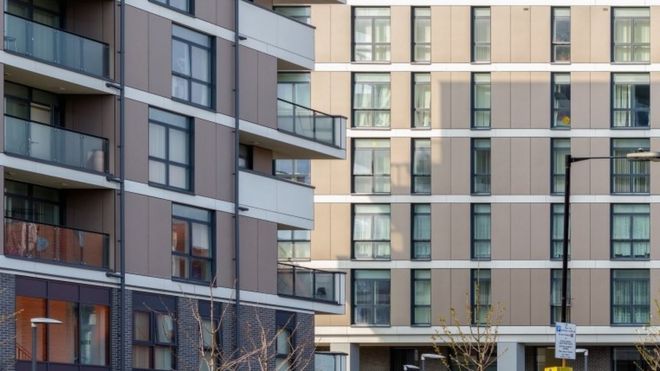
Ministers have pledged to put an end to the use of so-called “poor doors” in housing developments in England.
The separate entrances for social housing tenants living in new builds “stigmatise” and divide them from private residents, the government said.
Communities Secretary James Brokenshire said he had been “appalled” by the examples of segregation he had seen.
Under the new measures, planning guidance is to be toughened in a bid to create more inclusive developments.
Developers are often required to build social or affordable housing units in private developments as a condition of being granted planning permission.
But in some cases, social housing tenants have been excluded from using some facilities, and made to use different entrances from those which give access to privately owned homes.
In March, one development in south London was reported by the Guardian to have blocked children living in social housing from using a communal playground.
The BBC also visited a London apartment block in 2015 where there were separate entrances for private and social housing tenants.
London Mayor Sadiq Khan promised during his election campaign in 2015 to ban the practice, describing it as an “appalling form of social segregation”.
“Poor doors segregate people who are living side by side, they drive a wedge between our communities,” he said at the time.
As part of new measures, the government said a new design manual will set expectations for the inclusivity of future developments and help ensure planning decisions promote social interaction in communities.
The measures come as a survey commissioned by the government to mark 100 years of social housing found older people were less likely to feel comfortable about living close to council and housing association properties.
According to the survey, 38% of over-65s reported feeling comfortable, compared with 53% of 18 to 25-year-olds


